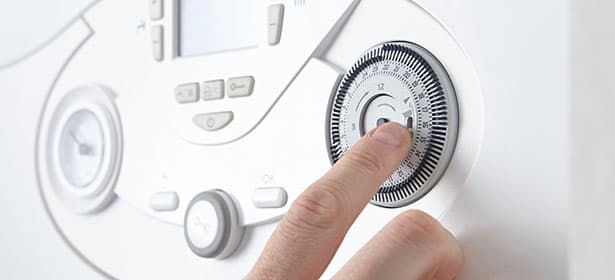

When it comes to boiler issues, most basic guides will always advise that you check and change your boiler timer. But what if you don’t know how to? While some boilers focus on digital timers, others have mechanical timers, posing more of an issue.
Fear not, because we have everything you need to know about how to set a timer on your boiler.
Boiler timers are essential for energy efficiency because they control your entire central heating system. In their simplest form, they can automatically turn on and switch off when you specify. But, newer models have intelligent features that enable you to configure your boiler to suit different rooms.
Having a boiler timer is handy in multiple ways. Let’s take a look at them.
Boilers control your central heating system, which is vital for households in winter. However, heating costs money and leaving it on all the time can create a significant dent in your wallet.
Another issue with manually controlling your central heating is an inconvenience. For example, if you’re getting ready for work in the morning and turn your heating on manually, it won’t have the chance to warm up, meaning you stay cold and your heating won’t perform to its capability.
Learning how to make your boiler work for your individual needs means you can tailor your heating to warm your home and help you save money. There’s no need to have the heating on while you’re at work or sleeping.
If you leave your boiler running all day and night, you won’t notice the difference in your warmth, but you will suffer from the impacts on your bank balance.
If every person in the world took small steps to reduce their carbon footprint, it would make a significant difference to the outlook for our planet. Central heating is one of the leading causes of household emissions but using a timer means you can promote greener living.
When it comes to combi boilers, there are three settings; on, off and timed. While many might display these functions with different buttons, the premise is similar across all boilers.
You can use these settings to control when your boiler comes on:
While boilers all have the same function, their design defines what you’ll need to do when you configure the time. Traditional boilers have a clock-like dial, while digital boilers have a screen similar to a digital clock.
The first thing you should do is compare the time on your boiler with your TV set or mobile phone. This ensures it has the correct time, which will allow you to configure the boiler correctly.
Most digital timers have arrow controls, and you can use them to set the time and use the different functions.
You’ll need to find the set button (or programme) and use the arrows to work your way through the times and days of the weeks.
Older boilers will require you to go through the entire week, but newer models will have more advanced functions, which enable you to choose one setting for the whole week or configure different times for the weekend.
Once you understand the basic controls, it’s relatively simple to tailor the boiler and central heating system to suit your needs.
It’s as simple as choosing the days and times you want your boiler to come on and confirming the changes with the run or set button.
Here’s the step by step method:
Similarly to a digital timer, you should always check your mechanical clock is correct. Most mechanical boilers use a traditional 24-hour clock, so you’ll need to use the 18:00 button for 6 pm.
You’ll notice small plastic pieces around the dial, and it’s these that will enable you to choose the right time for your boiler to come on.
Select the times you’d like the boiler to turn on and off, then push the tabs into the boiler or pull them the opposite way – depending on what your manual recommends.
It’s important to mention that each tab represents 15 minutes, so you’ll need to spend some time configuring each.
Older boilers need longer to warm up, so it’s advisable to set the timer to come on half an hour to an hour before you get out of bed in the morning.
Here are the steps you should take:Configure your boiler to show the right time.Mark the days and times you’d like the boiler to come on by either pushing or pulling the tabs.Ensure you’re working with the timed setting; otherwise, your boiler won’t work.